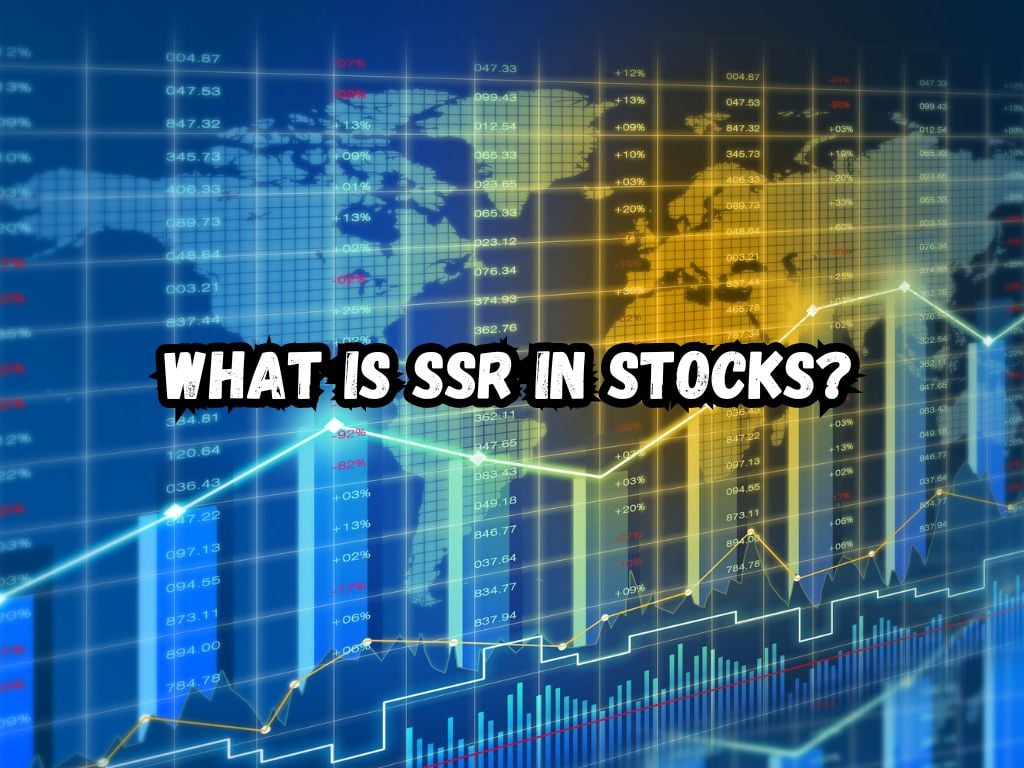Investing in the stock market can be as unpredictable as the weather. Every investor seeks strategies and regulations that can offer some form of predictability, or at least a safety net.
Enter Short Sale Restrictions (SSR), a key player for those in the sphere of stock trading. In this article, we will delve into what SSR is, its significance, and how it impacts trading.
What Is SSR In Stocks?
At its core, SSR refers to a set of rules that restricts the conditions under which stocks can be sold short. This might sound complex, but it is essentially a measure to prevent market manipulation and excessive downward pressure on stock prices.
Short selling is the practice of selling borrowed stocks in anticipation of buying them back at a lower price. SSR, also known as the “uptick rule,” requires that a short sale is executed at a price higher than the last sale price.
The Alternate Uptick Rule Explained
The alternate uptick rule is what gives SSR its teeth. According to this rule, short selling a stock is only allowed at a price above the current best bid.
The objective here is to ensure that the selling pressure does not accelerate the stock’s decline. This rule kicks in typically after a stock’s price has dropped significantly from the previous day’s close.

The Trigger: When Does SSR Come Into Play?
SSR is not always active. It is triggered when a stock’s price drops by 10% or more from the prior day’s close. Once enacted, SSR remains in effect until the end of the next trading day.
This mechanism is designed to give stocks a “cooling-off” period and prevent short-sellers from overwhelming the market.
Short Selling Restriction (SSR) is a regulatory measure implemented in the stock market to prevent excessive short selling, particularly during significant downturns. This mechanism is activated when a stock’s price drops by a certain percentage from the previous day’s close, aiming to curb market volatility and stabilize prices.
Pros of SSR
Prevents Panic Selling: By limiting short selling, SSR helps mitigate the downward pressure on stock prices, preventing panic-induced sell-offs. This can be crucial in avoiding market crashes that are accelerated by speculative short selling.
Market Stability: SSR acts as a safeguard during turbulent times, contributing to overall market stability. It provides a cooling-off period, allowing investors to reassess their positions without the added pressure of falling prices due to short selling.
Investor Confidence: Knowing that measures like SSR are in place can bolster investor confidence during volatile periods. This can encourage continued investment and participation in the stock market, even during downturns.
Cons of SSR
Impedes Market Correction: Critics argue that SSR can interfere with the natural market correction process. Prices may need to adjust downward for reasons fundamental to the companies themselves, and SSR can temporarily obstruct this adjustment, potentially leading to mispriced stocks.
Affects Liquidity: By restricting short selling, SSR can decrease market liquidity. Short selling contributes to market depth and liquidity, as it involves borrowing and selling stocks with the intention to buy them back later.
Limiting this activity can reduce the number of transactions, affecting the ease with which stocks are bought and sold.
Temporary Measure: SSR is often seen as a temporary fix that does not address underlying issues within the market or economy. Its effectiveness in stabilizing markets in the long term is debated, with some viewing it as a band-aid solution rather than a cure.
In summary, SSR serves as a critical tool in maintaining market stability by protecting against market volatility and panic selling. However, its role in hindering natural market corrections and affecting liquidity presents a complex trade-off.
The deployment of SSR highlights the delicate balance regulators must maintain between intervening to prevent market crashes and allowing markets to self-correct.
SSR vs. Traditional Short Selling
Traditional short selling lacks the safeguards that SSR enforces. Without SSR, selling can aggressively drive down a stock’s price, potentially leading to unjustified market panic.
SSR ensures that short selling contributes to market efficiency without letting it become a destructive force.
SSR Regulations: SEC’s Perspective
The U.S. Securities and Exchange Commission (SEC) upholds SSR to protect investors and maintain fair, orderly, and efficient markets. The SEC closely monitors market activities to ensure compliance with SSR regulations, adapting its rules as necessary to address new economic challenges.

Frequently Asked Questions
What triggers SSR in stocks?
SSR is triggered when a stock’s price falls 10% below the previous day’s closing price.
How long does SSR last?
Once triggered, SSR lasts until the end of the following trading day.
Does SSR apply to all stocks?
SSR applies to all publicly traded stocks but is only triggered under specific conditions.
Where can I find more information on SSR?
The U.S. Securities and Exchange Commission’s website provides detailed regulations regarding SSR.
Conclusion: Reflecting on SSR’s Role in Stock Trading
SSR emerges as a foundational element in the architecture of stock market regulation. While it has its critics, the benefits of SSR in promoting a stable trading environment cannot be overlooked.
Traders, armed with an understanding of SSR, can navigate the stock market with increased awareness and caution.
Understanding SSR in stocks is crucial for both seasoned investors and those new to the trading world. It serves as a regulatory mechanism that seeks to balance the free market’s natural forces with protective measures against manipulation and undue volatility.
By grasping the ins and outs of SSR, traders can better strategize their investments, taking one more step toward achieving their financial goals.


 Tags:
Tags:










